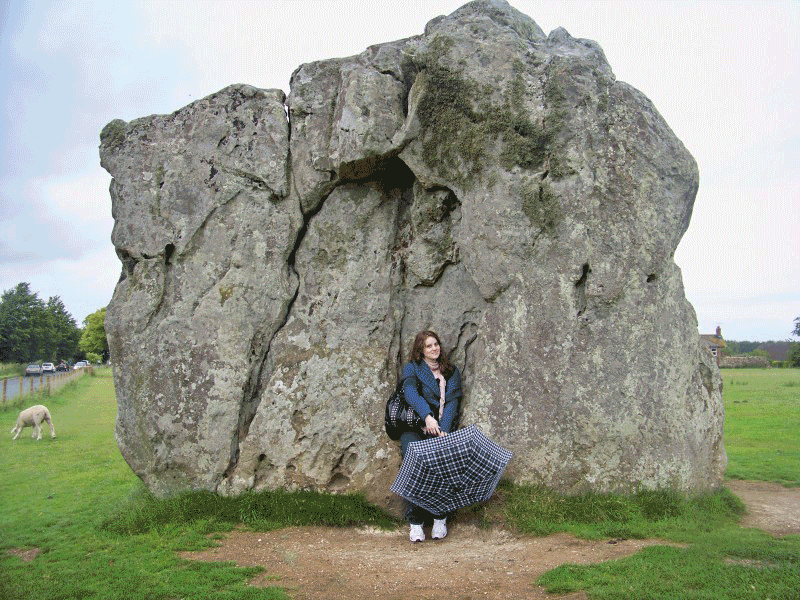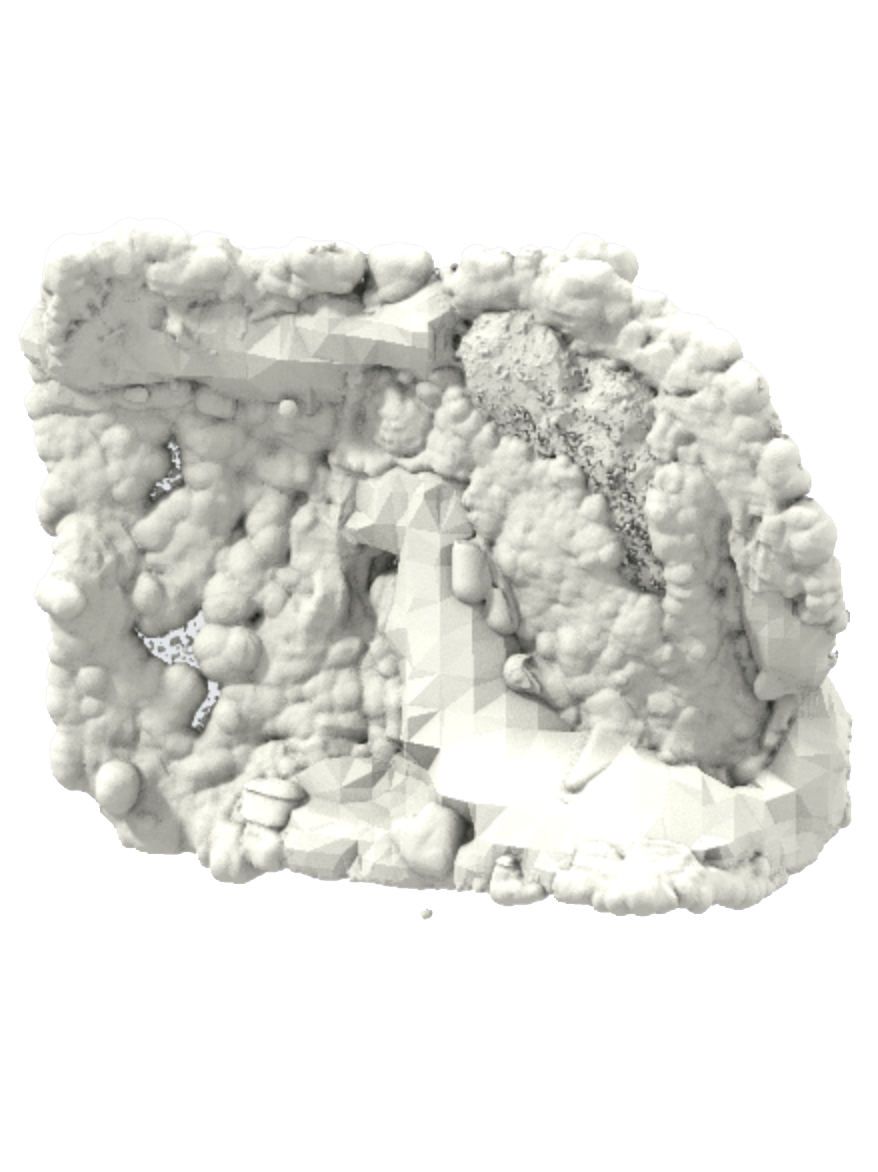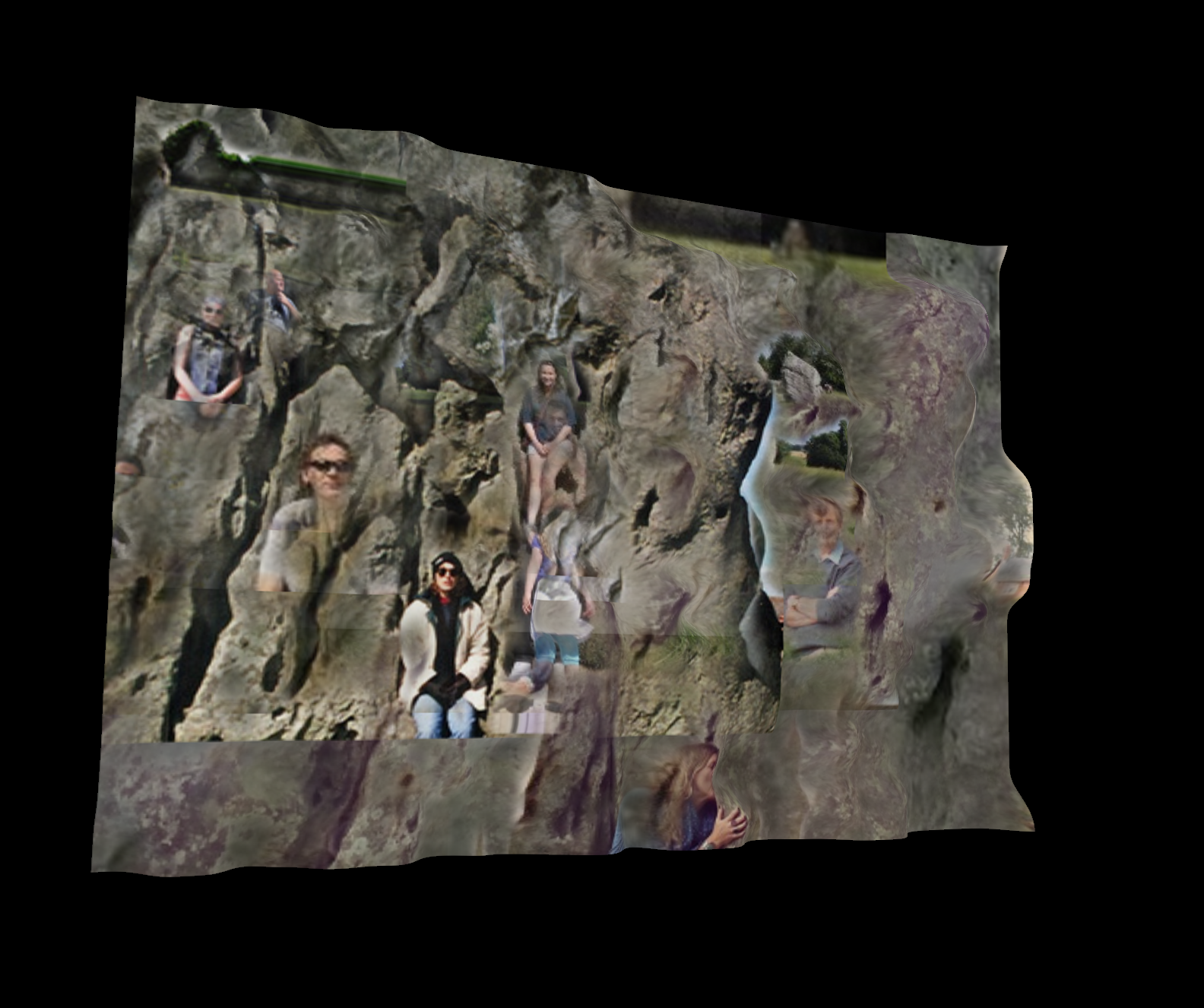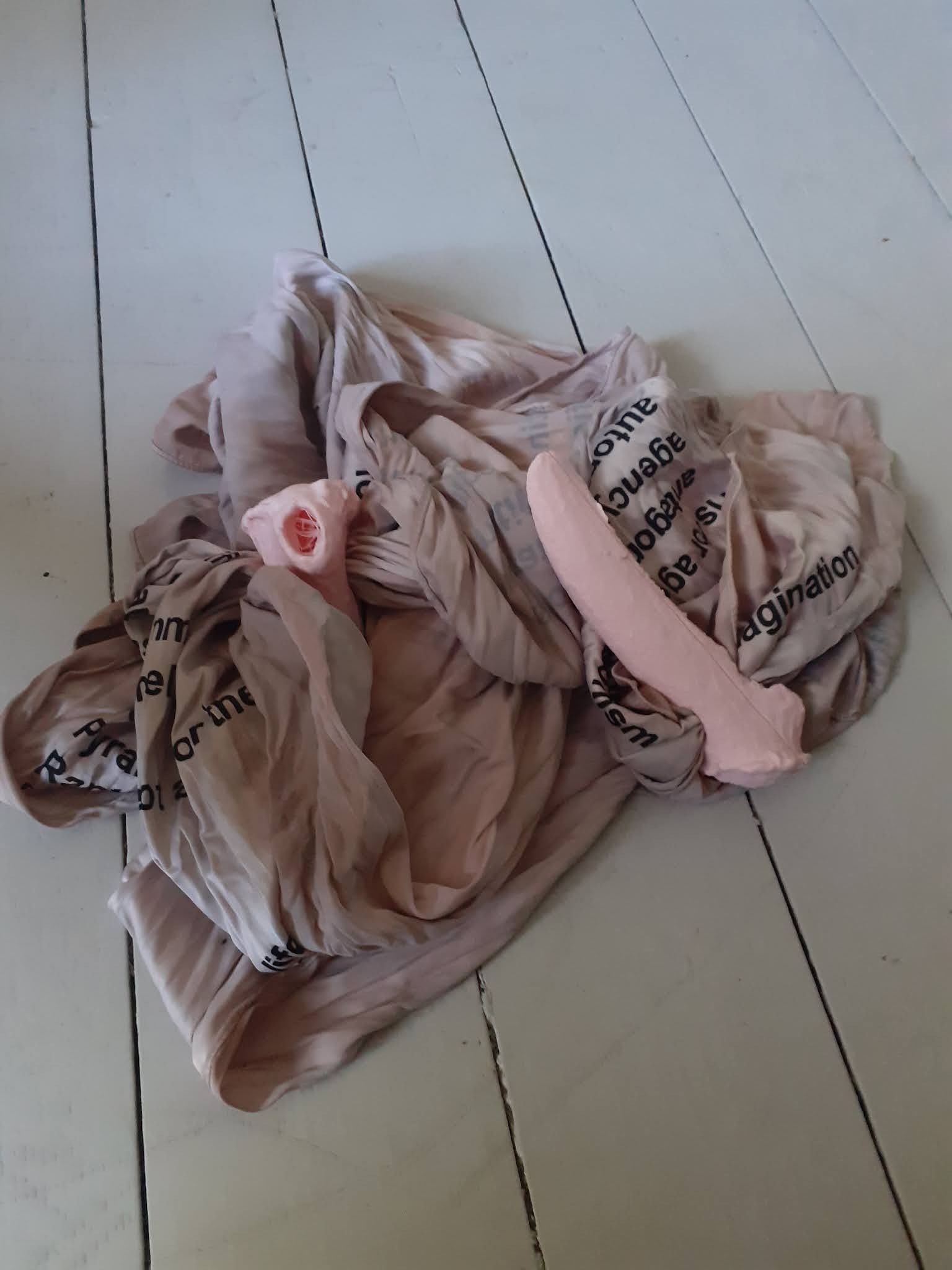

2012
My brother sent me a picture he took in the early 1980s of our parents standing by the Devil’s Chair at Avebury. A pose is taken up in relation to the scenography. I reverse image searched pictures of visitors posing at the same stone, downloaded and animated them sequentially as an endless gif. The compiled images visualize an aspect of time, the stone moves. I compiled them again in Agisoft photoscan, which succeeded in tying points across time. The spatialized result is printed in white nylon. The found images have been aggregated into a souvenir object.

Stumbling into life in 1816, the summer of no light, no harvest, on a sad, dark, wet holiday.
Fermenting ghost stories from kitchen waste. A slaughter house mash-up of stories, storms, natural philosophy, biology, origins of life, charged up and hissing with electricity.
In Shelley’s incarnation Frankenstein's monster is intelligent and well spoken, but hideous and repellent. Karloff’s classic 1931 Frankenstein monster is pictured with bolts and stitches. Anti-cosmetic and language-less. His remakings through film and popular culture over two centuries see him lose articulacy and voice and replicate to spawn re-animated multitudes. Zombie imaginary. Phobic objects for TV dinners.
Change of form and of properties are propelled by the movement of the story through generations and locations, each successively diffracting their own temporal anxieties.
The stories themselves are revenant. These are the technologies of transference, trading and exchanging. The story is remade, patched and repurposed using materials and pathologies at hand. Return to the story is a sort of ‘legend tripping’: adolescent, nocturnal pilgrimages to sites associated with hauntings, tragic or horrific events, often involving dares, trespassing, risk-taking and ‘ritual’.
The devil’s chair is a name sometimes given to C19 funerary monuments and to geologic sites. It is also the popular name for the massive stone (#1) at the junction of West Kennet Avenue and the circle. It and its pair are described on maps of Avebury as the entrance to the circle, forming a formidable gateway.
The Devil’s Chair is a locus for legend tripping. Frankenstein refers to his creature as a ‘wretched devil’. So let’s see this as the estranged creature’s chair. We take up a pose determined by the site, taking the seat of the creature, standing-in, posed for a photograph. The shape of the stone forces a default pose and a default camera angle where the stone acts as a backdrop or scenic prop filling the frame. An image search produces countless re-inscriptions of this singular dispositif. Each providing a glance or incident of historic change in photographic technical process, aspect ratios, colour processes, fashion. Make a wish.
